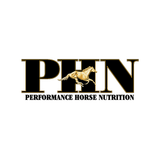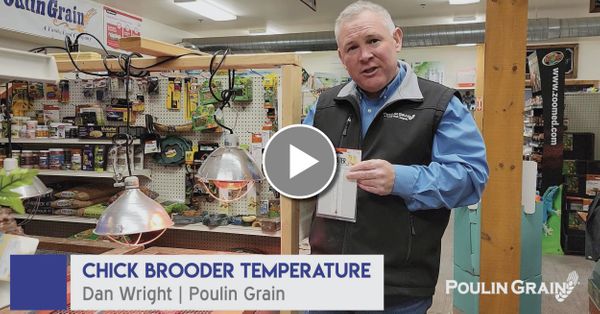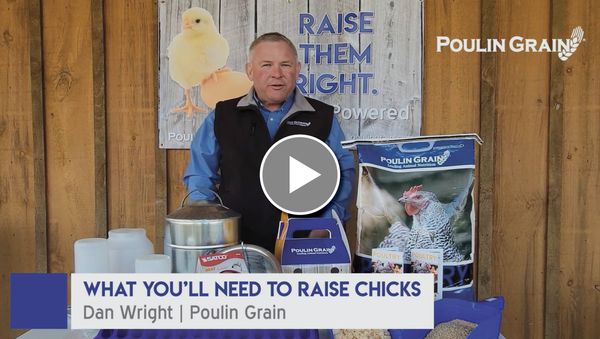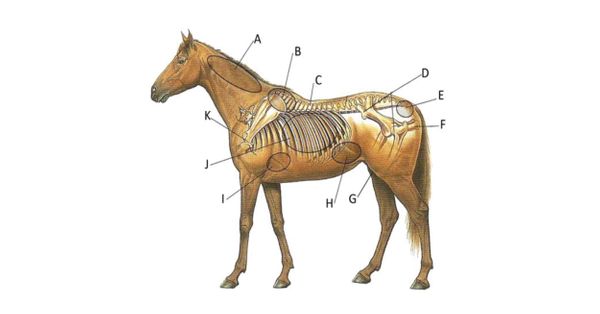Hay 101: Matching the Right Forage with your Horse's Nutrient Needs

Forage (fiber) from pasture and/or hay is the predominant ingredient in the diet for most horses. The digestive system of a horse requires forage to function properly. Horses that have access to abundant pasture will satisfy their need for forage by grazing. Horses kept in stables, horses kept in grass-free paddocks, and most horses during the winter months depend on their caregivers to provide the proper amount and type of forage. The forage of choice in these situations is hay. Given the importance of hay in horse diets, we should take a refresher course in hay — we’ll call it “Hay 101”.
What is hay? Hay is plant material that has been grown, cut down, dried, packaged into bales, and stored for feeding at a later time. Just about any type of plant can be made into hay. To have good quality horse hay you must start with nutritious plants, harvest those plants at the proper stage of maturity to maximize nutrient content, and dry the plants properly so they don’t spoil (mold).
In general, horse hay falls into two broad categories - legume and grass. Legume hay is generally higher in protein, energy, and minerals than grasses harvested at the same maturity. Examples of legume hays include alfalfa, clover, bird’s foot trefoil and lespedeza. Grass hays include Timothy, orchard grass, bluegrass, bromegrass, ryegrass, fescue, and bermuda grass. Other plants with a similar nutrient profile to grass hay are cereal grain hays. Cereal grain plants, such as oats, barley and wheat, generally make good hay when harvested during their early growth stages before seed heads become predominant. Most any legume, grass or grain hay can be fed to horses if it is high quality.
Selecting a hay
With so many types of hay available, how do you choose one appropriate for your horse? The goal is to match the nutrients provided by the hay with the nutrient requirements of the individual horse. For example, the nutrient requirements of a pregnant mare are higher than the requirements of a mature gelding. Table 1 lists several classes of horses and recommendations for hay type selection. Note: quality hay, of any type, could be fed to any class of horse. If hay with a low or moderate nutrient content is fed to a horse with high nutrient requirements, the nutrients lacking in the hay must be supplied in the grain concentrate portion of the diet. Likewise, if hay with a high nutrient content is fed to horses with low or moderate nutrient requirements, less grain is needed to balance the diet. More important than the type of hay fed, is the amount of good quality hay fed. Feed at least 1 lb. of hay per 100 lbs. of body weight per day.
Table1. Suggested Hay Types for Different Classes of Horses
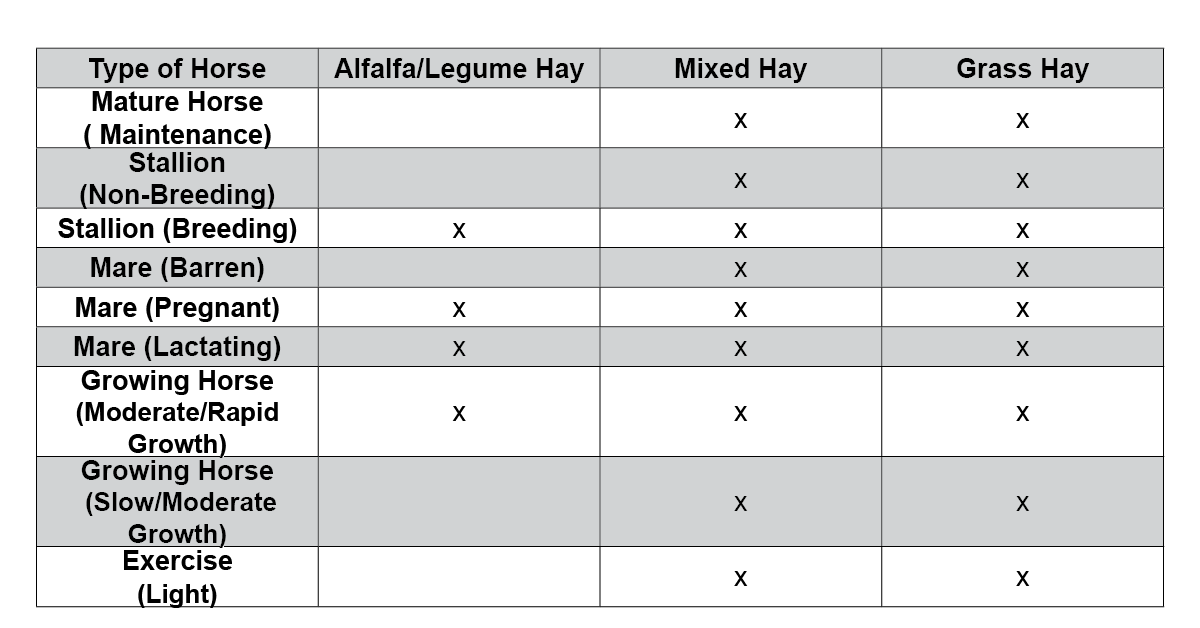
Determining hay quality
Horses require good quality hay because their digestive tract is “one-way” in direction. Horses normally are not capable of vomiting, and they become sick if fed moldy or dusty hay. Hay quality can be determined in many ways. Stage of maturity, leafiness, color, foreign material, odor and condition are physical parameters that can be judged to determine quality. Physical quality can be determined by observation and comparison of hay samples. Table 2 indicates what to look for in judging these physical parameters.
Table 2. Physical Characteristics of High-Quality Hay
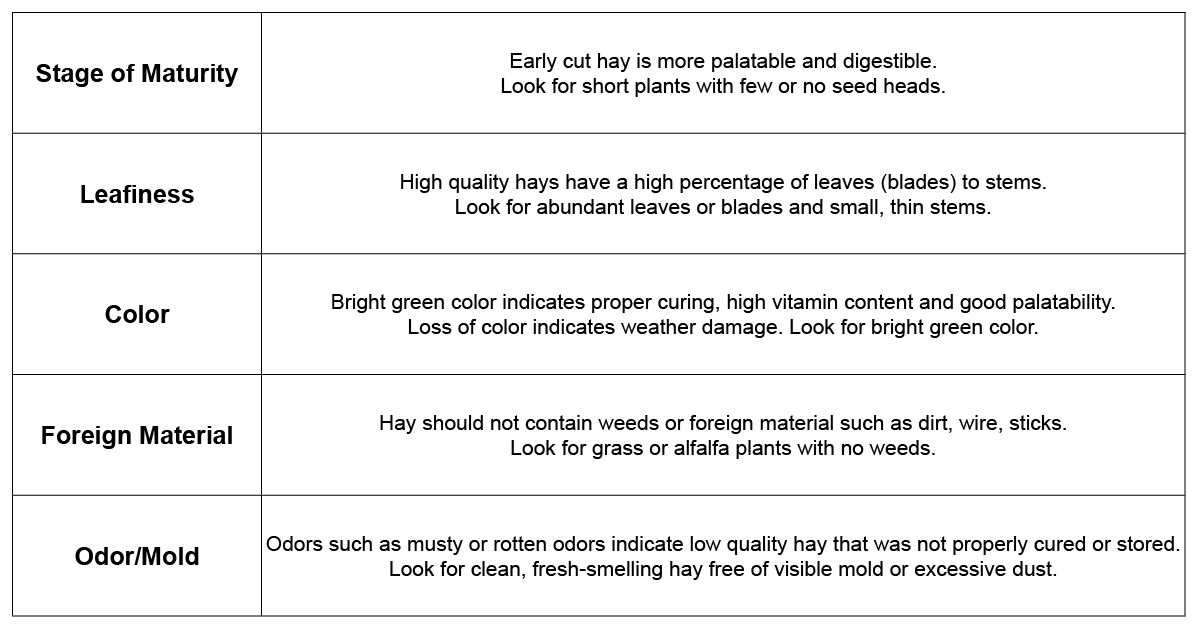
It should be noted that lower nutritive value hay can be fed, but it will require increased grain supplementation. Moldy or very dusty hay should not be fed at all. See our Q&A with PHN on Hay for an explanation of what to look for in a laboratory analysis of hay.
Health Concerns Related to Different Hays
Finally, there are a few health concerns that merit attention when choosing horse hay. High moisture hay (haylage or baleage) may be fed to horses, but may have increased risk of molds or toxins such as botulism. Some hays are susceptible to fungal infections, including rye (may be infected with ergot) or fescue (which may be infected with endophyte fungus). Sudangrass hay or sorghum-sudangrass hybrids may result in health disorders and should be avoided. Red clover harvested in warm humid weather may become infected with a fungus that causes “slobbering.” Alfalfa may contain blister beetles, primarily if sourced from the central US, and should be examined to ascertain that it is not infested. In general these problems are not common,but awareness of the possibilities will help when making informed decisions about hay selection.
Contact a Poulin Grain Feed Specialist to test your hay quality and build a personalized diet for your horse.
www.PoulinGrain.com | 800.334.6731

